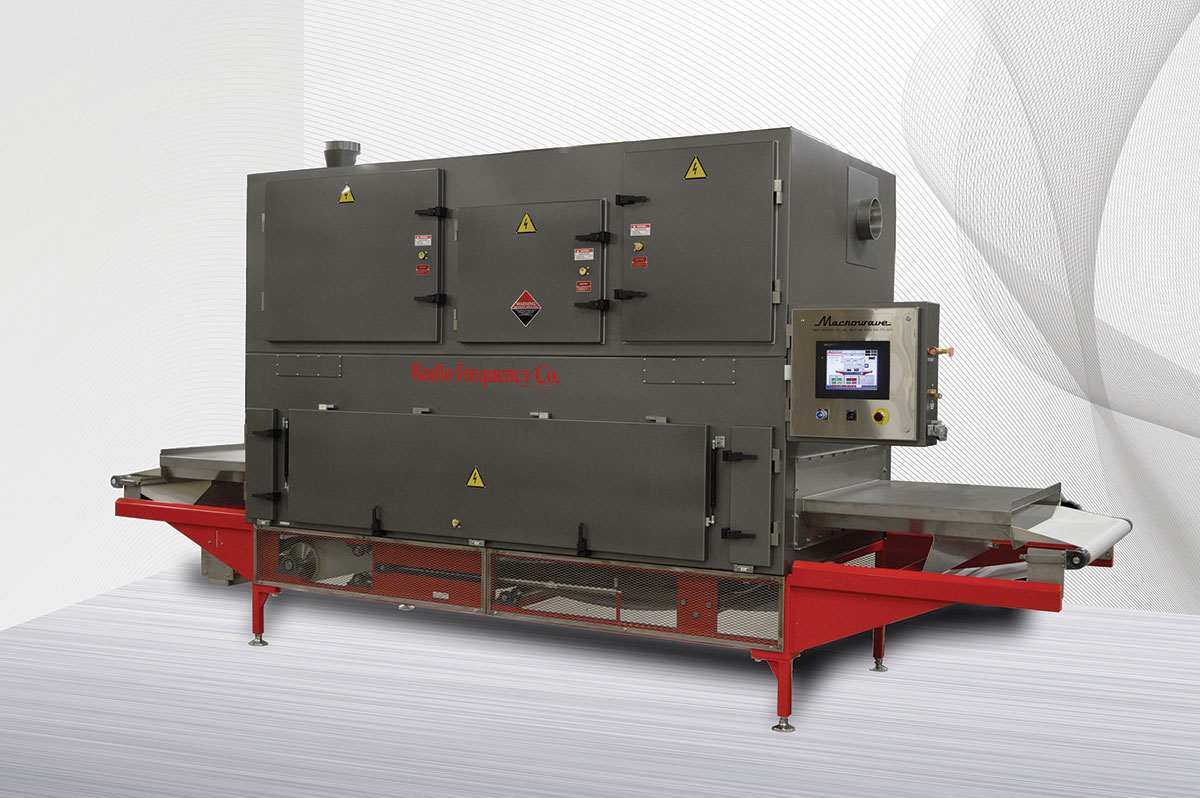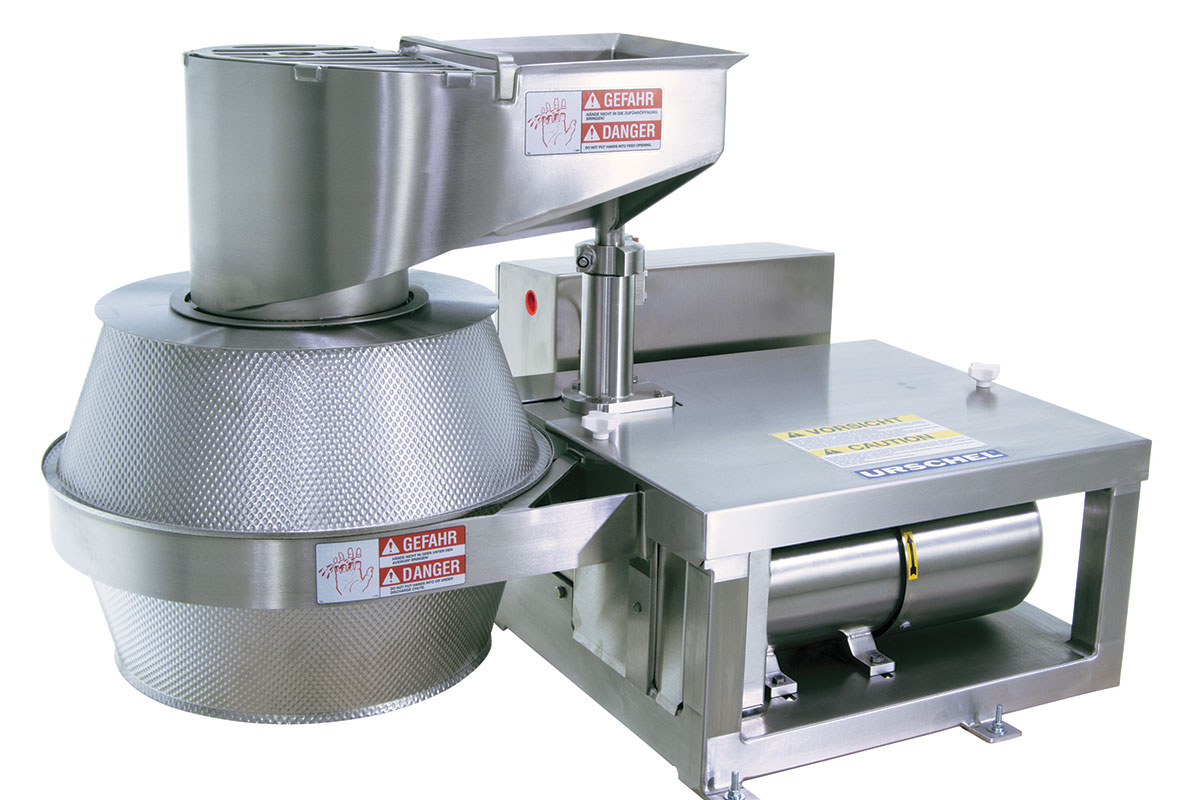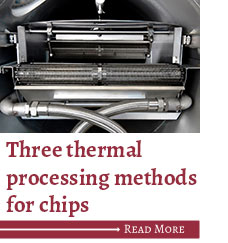The snacks drawing the most attention these days seem to be the ones toting healthful ingredients, particularly those that consumers recognize but may come in a new format. Chips made from bases other than potatoes definitely fall into that category. Specifically, vegetables, fruits, beans and even meat have made a mark on the snack chip category.
“Across the world, producers are looking at new ingredients as a possible solution to improving the healthfulness of their products,” said Arnaud Jansse, food technologist, TNA. “The snack category, in particular, is ripe for innovation with manufacturers formulating with alternative ingredients such as ancient grains and whole seeds. At the same time, the fruit and vegetable chip market is experiencing significant growth with banana, kiwi and coconut chips becoming increasingly popular among consumers.”
While many snacks made from alternative bases are extruded, chips are made in a similar way as conventional potato chips: either sliced and fried or a dough that is sheeted, cut and baked. In both processes, alternative bases bring challenges not always present in conventional potato chip processing.
Fruits and vegetables can have high sugar and starch content, causing coloring issues and increased acrylamide in the fryer and oven.
“When processed at high temperatures, the reducing sugars caramelize and participate in the Maillard reaction, leading to browning,” Mr. Jansse said. “This not only affects the color of the product but can also increase the level of acrylamide.”
Vegetables like cassava, carrots and plantains can all be difficult to slice for different reasons. Doughs made from vegetable and fruit powders require more flexibility than wheat-based ones. Thermal processing, whether fried or baked and dried, also requires adjustments to get efficient and even moisture removal. The proper equipment and strategies, however, can result in a chip that delivers the right color, nutrition and crunch to the consumer.

Dealing in raw
When working with a raw vegetable or fruit that will be sliced and then fried, pre-conditioning that ingredient helps with consistency issues in slicing that will impact the frying and finished product quality. Vegetables and fruits can have high reducing sugar content. This can cause dark spots and discoloring once fried, which isn’t appetizing to most consumers. Two methods of pre-treating the vegetables and fruits minimize this outcome.
To reduce the vegetable’s or fruit’s starch content, wash it in cold water and then again in hot water to cut as much sugar content as possible.
“This step delivers significant benefits for further processing as it reduces the discoloring of the chips during the frying process,” Mr. Jansse said.
Pulsed electric field (P.E.F.) technology has similar results. The pulses puncture cell membranes in the vegetable or fruit and allow fluid to exit. This removes reducing sugars and moisture, which in turn reduces acrylamide formation during the frying process.
“It also aids the development of products with the visual appeal consumers expect,” Mr. Jansse said. “Their removal via P.E.F. treatment reduces the effects of caramelization, maintaining the color of the raw ingredients and optimizing overall appearance.”
P.E.F. technology has other benefits to processing these raw materials, too. Carrots, cassava and yucca can all be hard and brittle, making them difficult to run through commercial slicing equipment to get a consistently smooth cut.
“If you take a cassava out of the ground, it will start cracking on its own while drying,” said Mike Jacko, vice-president of applications and new product innovation, Urschel.
Micro-cracking is common with these brittle vegetables when they aren’t pre-treated in some way, which results in the chips absorbing more oil in the fryer. This can lead to a waste of oil and unwanted residue on the finished chips.
“Even though we use razor blade knives to cut these harder products, sometimes it’s not enough,” Mr. Jacko said. “Everyone wants high yield, low-oil consumption and less scrap, but you have to expect higher amounts of all of that unless you do some kind of pre-treatment.”
P.E.F. treatment can impact that oil absorption and slicing consistency by rupturing the starch cells in these tougher vegetables. This makes them easier to slice and prevents micro-cracking.
“The perfectly smooth surface of a P.E.F.-treated slice with smaller intact cells inhibits excessive oil uptake while maintaining crispness,” Mr. Jansse said. “This allows for the production of natural, low-fat snacks as well as delivering the texture consumers desire.”

Sheeted dough for snacks
Baked chips, whether made from conventional white potatoes or another vegetable, are typically sheeted rather than sliced from the raw vegetable. While the process is similar to crackers, in some ways it’s simpler, and in other ways it has its own challenges. That’s because vegetable chip doughs are sheeted much thinner than cracker dough.
The reduction to 0.7 or 0.9 mm is going to be more intense than the reduction to 1.2 or 1.5 mm that most wheat-based cracker doughs go through, said Ken Zvoncheck, director of process technology, Reading Bakery Systems (RBS). If a vegetable dough contains gluten, it could be damaged in the reduction process of this very thin sheet, he said. If it doesn’t contain gluten, the dough doesn’t get away scot-free. In that case, it can be stickier.
“Additionally, this type of dough may also have a high oil content that could leech out as it goes through these reductions,” Mr. Zvoncheck said.
 Most cracker sheeting technology starts with a four-roll sheeter with a pressure pocket between the rolls where the dough can get overworked. RBS uses a two-roll sheeter on its multi-crisp system. The dough only has to navigate through one primary reduction and a secondary reduction station to achieve its final thickness.
Most cracker sheeting technology starts with a four-roll sheeter with a pressure pocket between the rolls where the dough can get overworked. RBS uses a two-roll sheeter on its multi-crisp system. The dough only has to navigate through one primary reduction and a secondary reduction station to achieve its final thickness.
To help these doughs sheet more effectively, RBS also gave operators the ability to independently control the rollers. In a traditional cracker set-up, one motor controls both the top and bottom rolls. The bottom one was usually driven about 5% faster than the top roll in these cases.
“The dough always sticks to the fastest roll,” Mr. Zvoncheck explained. “We want the dough to stick to the bottom roll, so we make the bottom roll slightly faster.”
While this works well for wheat-based cracker doughs, vegetable and high-protein chips can be fickler.
Independently driven rollers give operators the flexibility to adjust to the product’s needs.
“A dough running today may have a 5% differential that works perfectly, but for another type of dough a 5% differential won’t work at all,” Mr. Zvoncheck said. “Just by changing that differential speed to maybe 10% or 15% you can find the sweet spot where that dough will sheet perfectly. I call it the miracle of differentials because just changing this differential speed by a few percentages, the dough goes from not sheeting at all to sheeting perfectly.”
These differentials and the flexibility of independently driven rolls speaks to a greater need in vegetable and high-protein chip processing — the need for control. From the formulation to the mixer to the sheeter, operators need to exert precise control over the ingredients and the process to get the desired finished product.
If the dough is under- or over-mixed, it can change the texture. If the dough temperature varies just a few degrees, problems can arise at the sheeter.
“Even small changes in the amount of water in some of these doughs can make it either sheetable or non-sheetable, so they have very strict tolerances overall versus standard wheat-based doughs,” he said.




